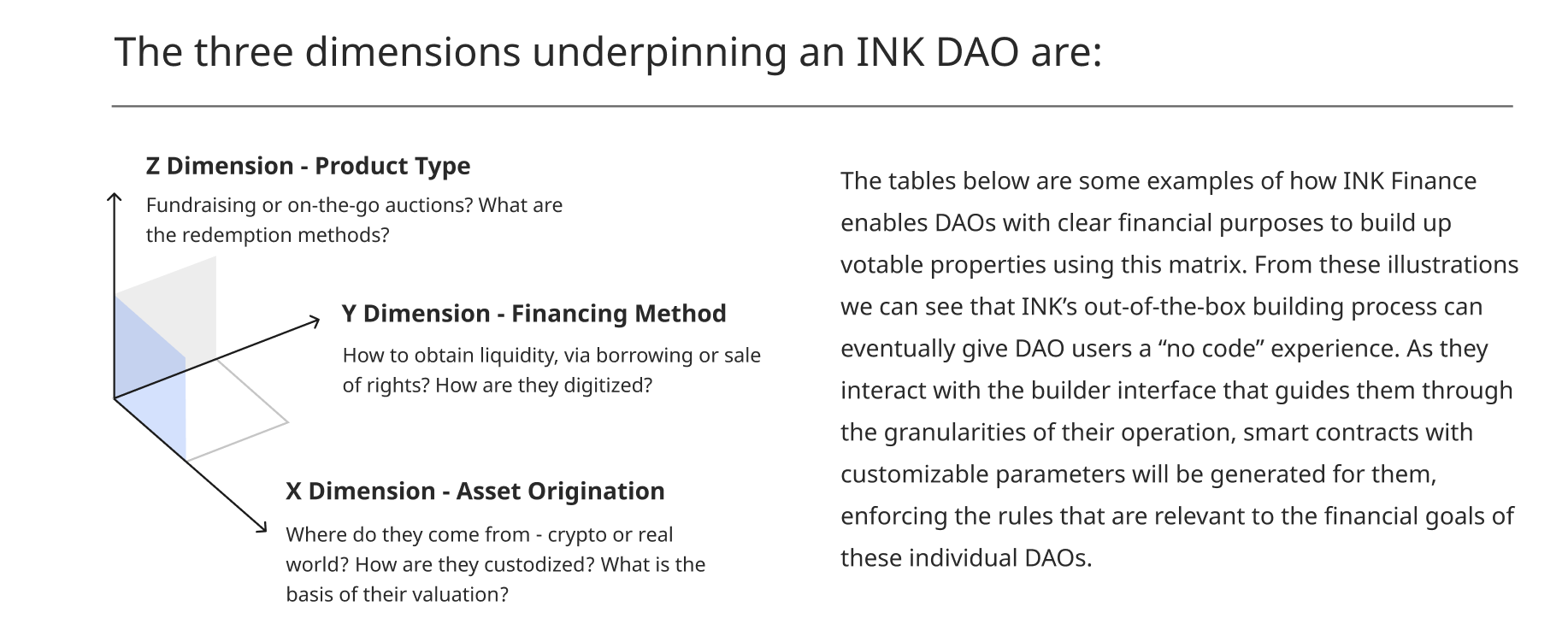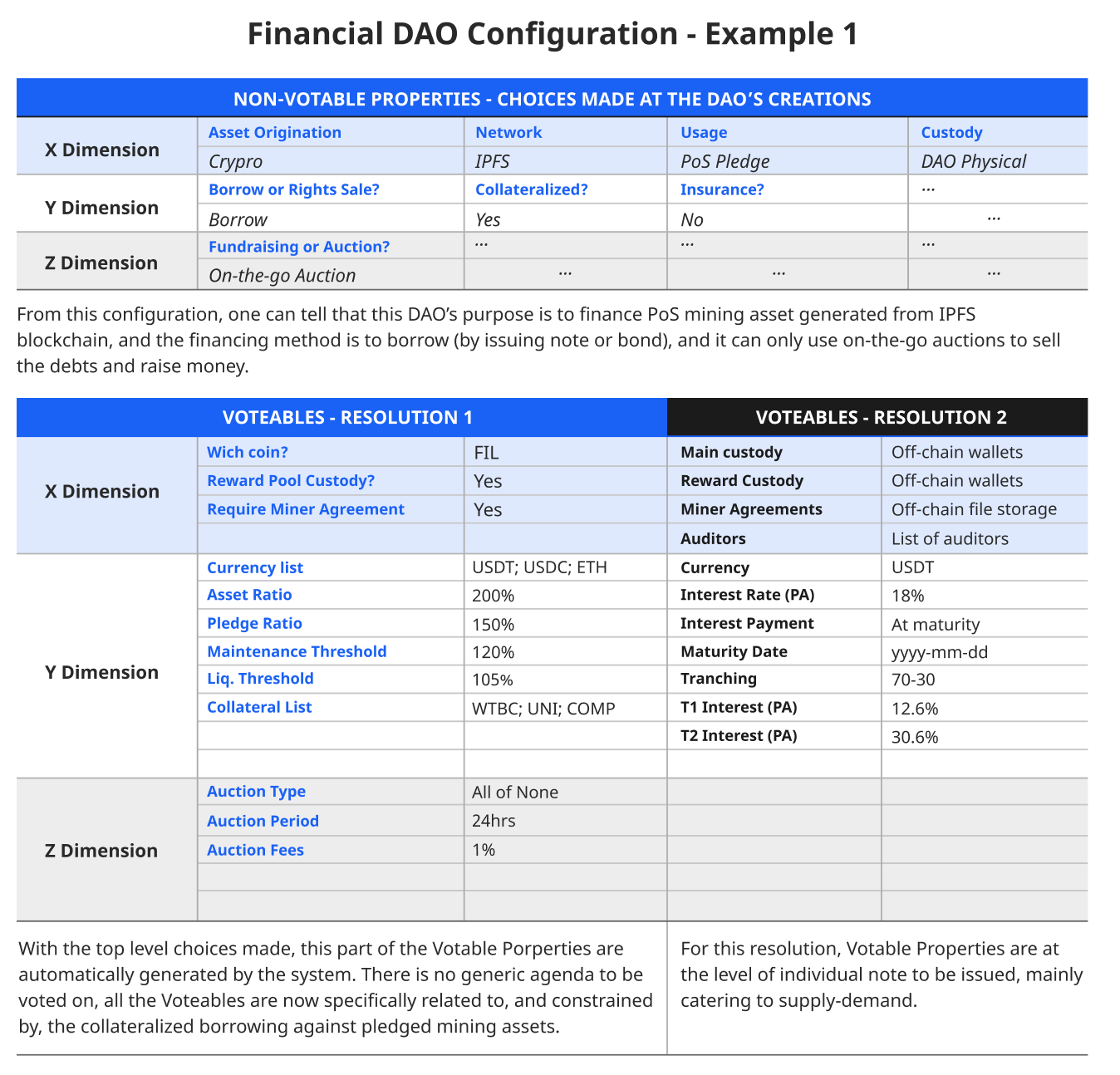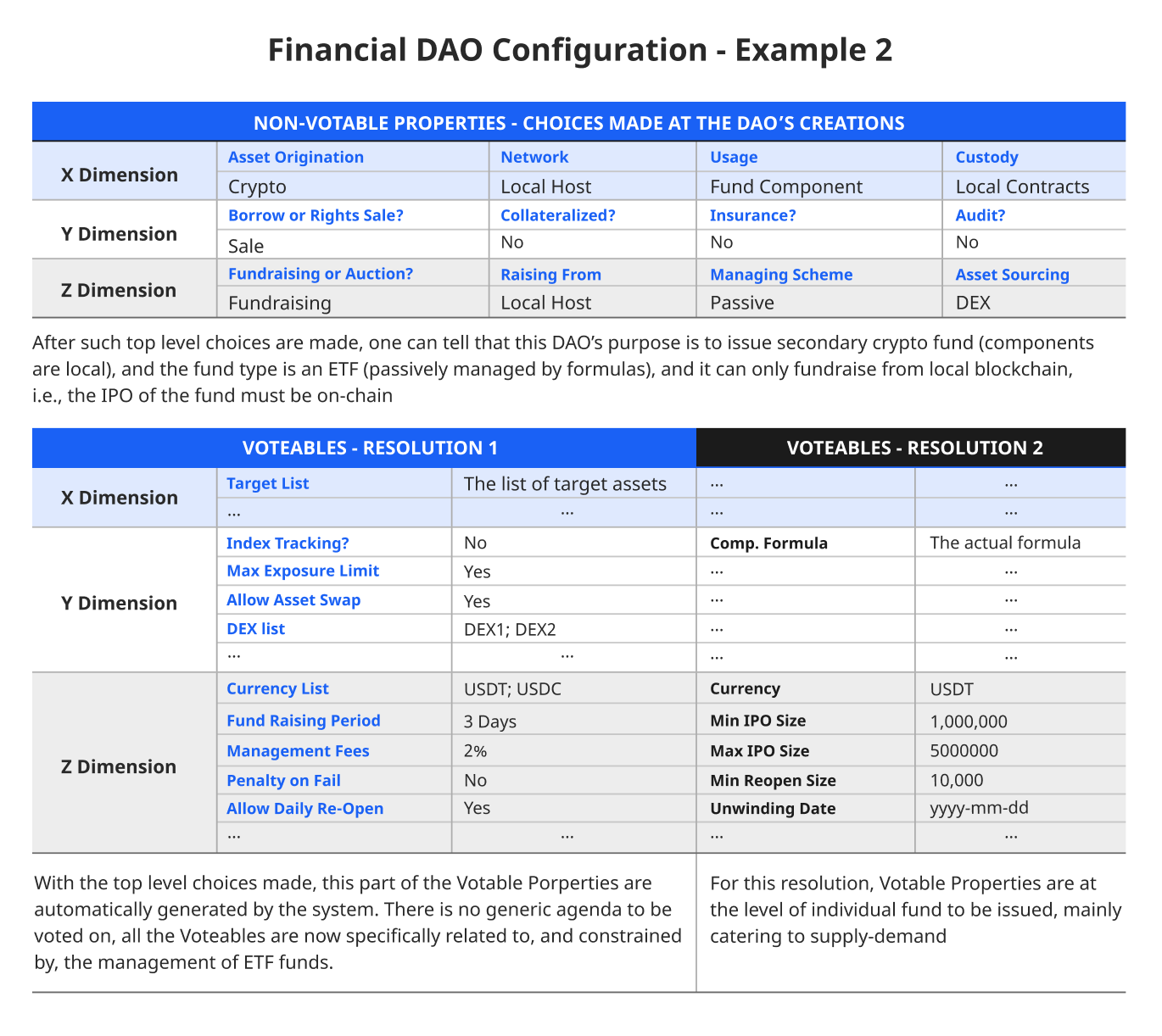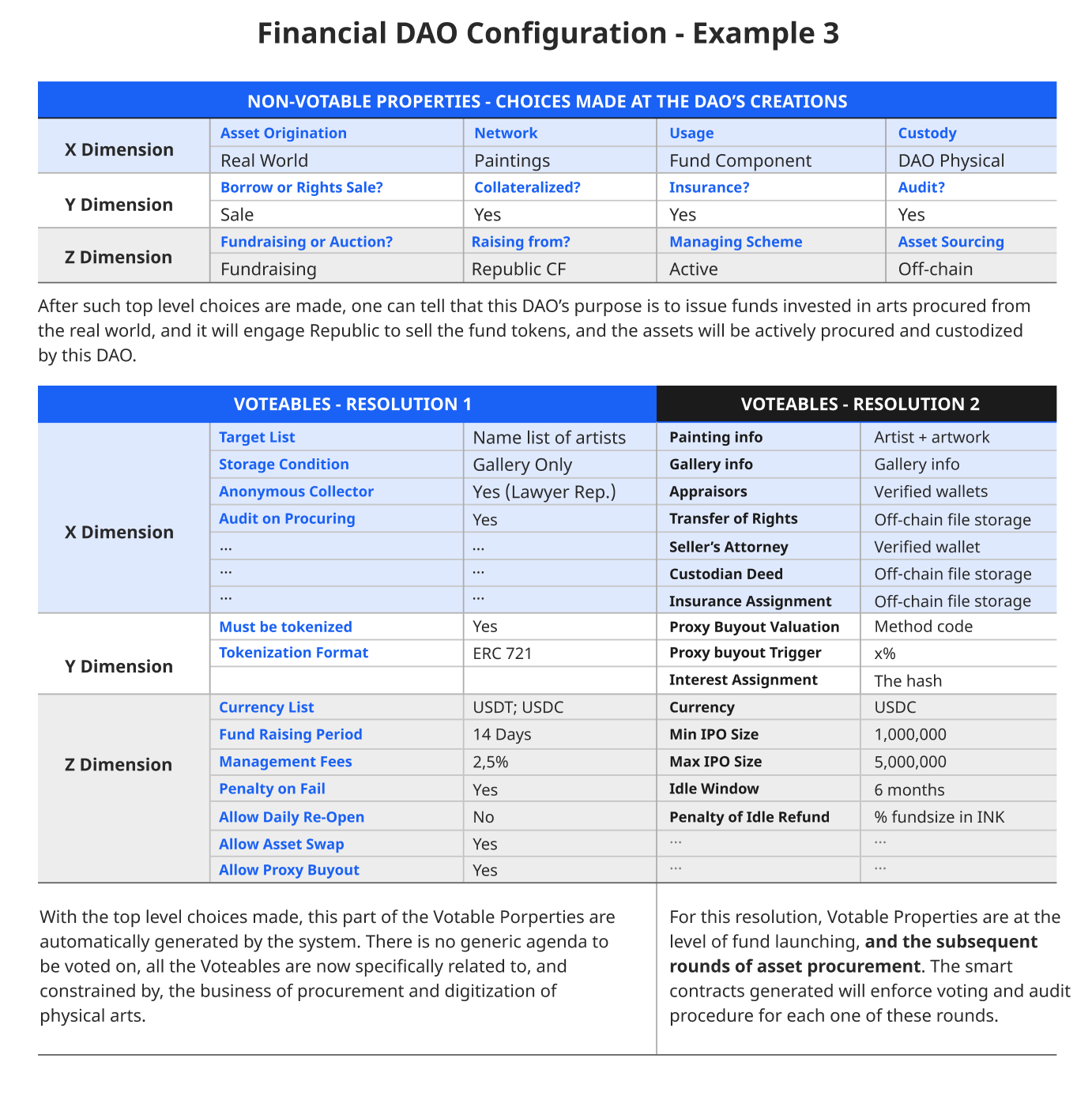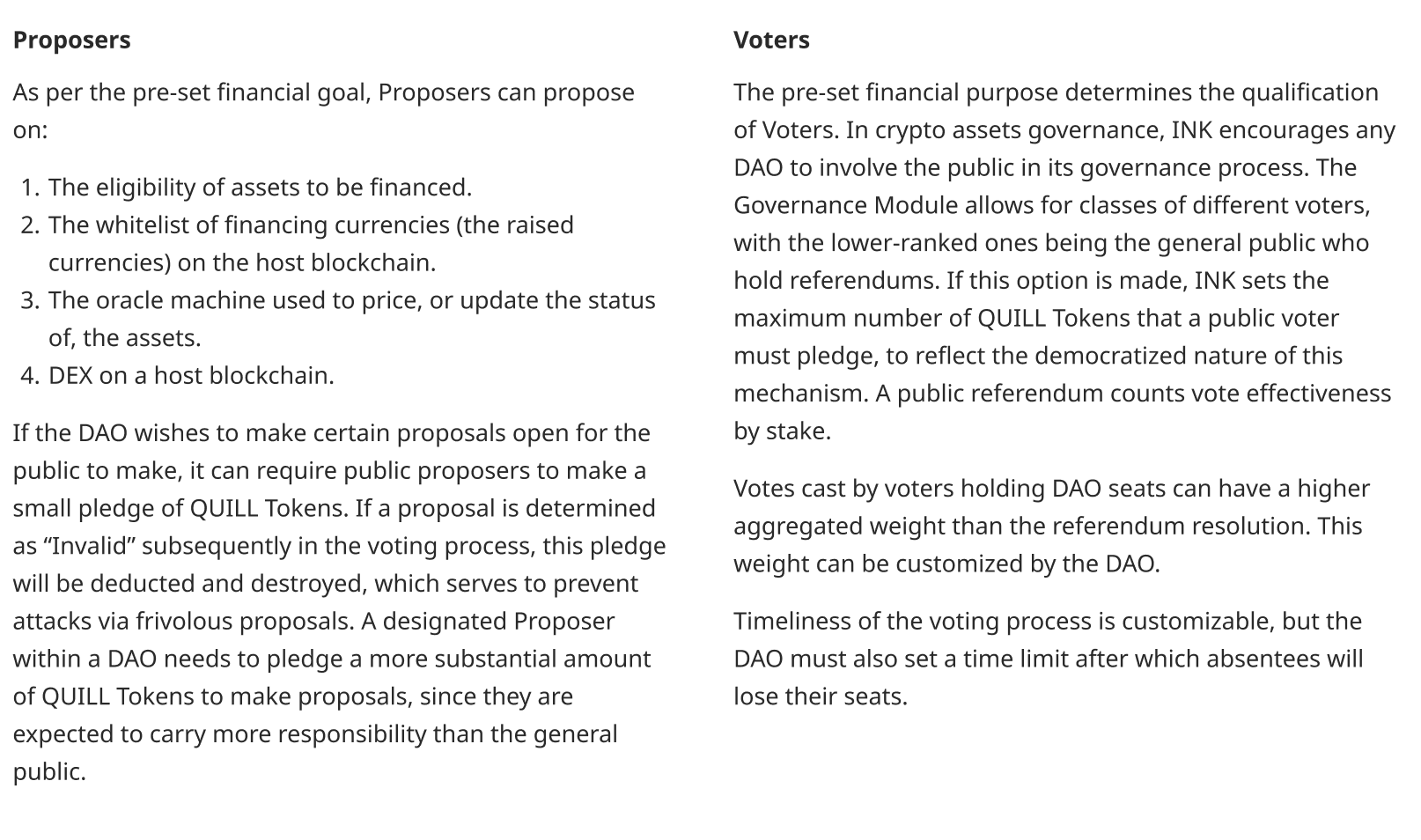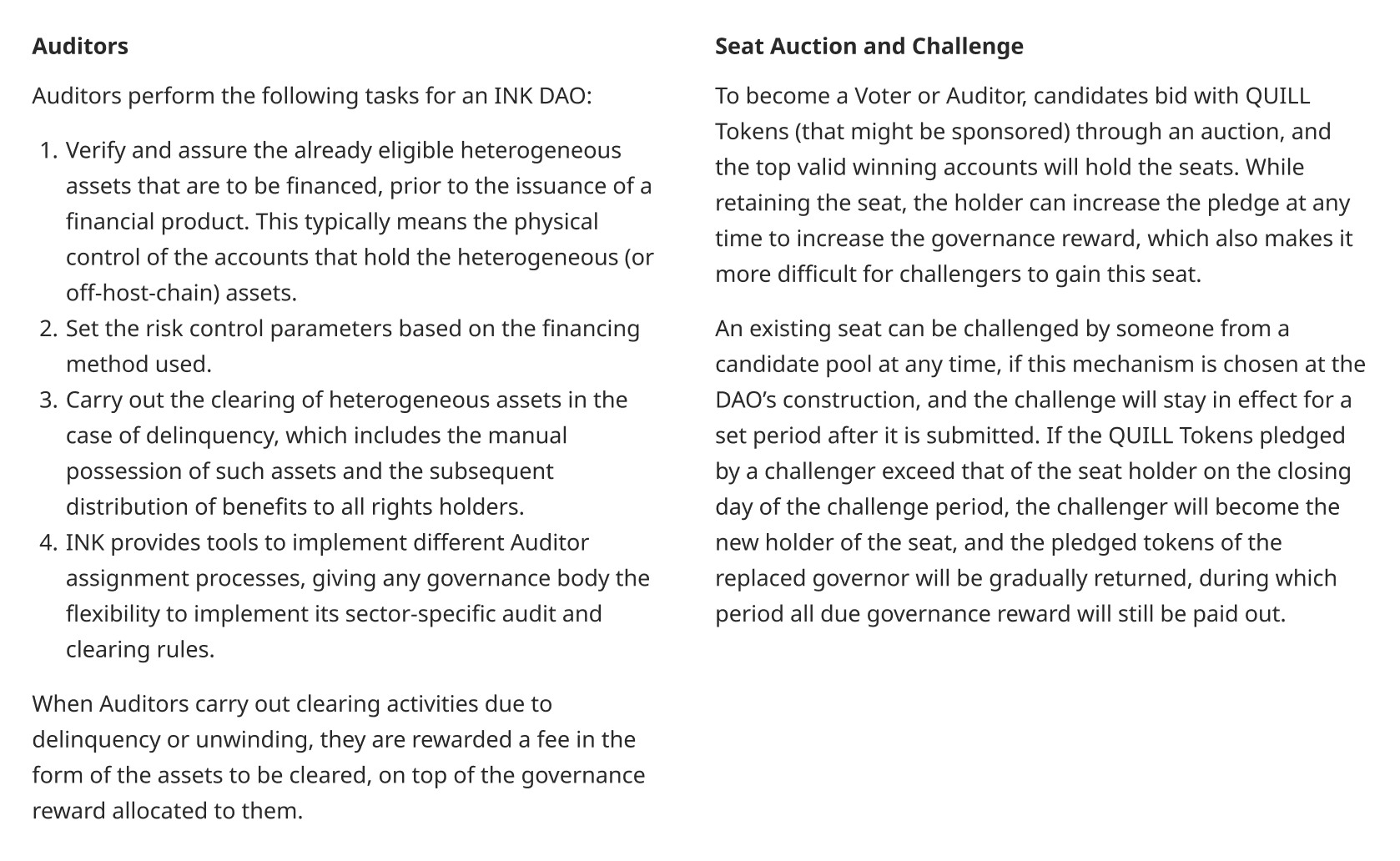INK Governance Module
When a wide range of bespoke assets and financial products are involved, common sense tells us that no generic organization or group of people can govern them well. Any attempt to organize specially focused financial DAOs under a generic framework is likely to expose itself to abuse and misuse. INK doesn’t attempt to be a “generic” DAO builder—it only aims at building financial DAOs, and building them well. INK devised a top-town construction approach. An INK DAO starts with making top-level choices, the non-votable properties, in a three-dimensional matrix. This will determine the next level of votable properties, which will then further substantiate more votable properties at the next level down, which corresponds to parameters of an issued financial product (such as a debt or a fund). As the granularity gets finer, the items needing a DAO’s decision get better defined, guiding the factory to produce a suite of precise smart contracts that form the DAO’s governance space. This scheme achieves robustness and flexibility at the same time.The INK Governance Module allows for out-of-the-box construction and customization of tailored financial DAOs. Since the functional objective of INK is the on-chain issuance, risk management, and clearing for Non-Fungible Financial Instruments, the primary focus of the INK DAO framework is on unique building blocks dedicated to regulating financial usage, integrity, and capital efficiency. Other tools in the Governance Module that are universal for all DAOs (such as management of roles, seat auctions, and vote counts) are of secondary importance.
All smart contracts in this module are dynamically generated, automatically configured, and ready to be customized from a master factory on the mainnet, with the goal of getting a financially purposed DAO up and running fast.
INK’s Top-down DAO Building Blocks
When a wide range of bespoke assets and financial products are involved, common sense tells us that no generic organization or group of people can govern them well. Any attempt to organize specially focused financial DAOs under a generic framework is likely to expose itself to abuse and misuse. INK doesn’t attempt to be a “generic” DAO builder—it only aims at building financial DAOs, and building them well. INK devised a top-town construction approach. An INK DAO starts with making top-level choices, the non-votable properties, in a three-dimensional matrix. This will determine the next level of votable properties, which will then further substantiate more votable properties at the next level down, which corresponds to parameters of an issued financial product (such as a debt or a fund). As the granularity gets finer, the items needing a DAO’s decision get better defined, guiding the factory to produce a suite of precise smart contracts that form the DAO’s governance space. This scheme achieves robustness and flexibility at the same time.
On-Chain Reputation
With its technical capabilities, financial functionalities, and economical framework, INK aims to be a credit discovery platform. Its primary goal is to promote transparency, competence, and fairness in financial governance.
However, a framework entirely built upon incentives and penalties is inadequate in addressing integrity, particularly in crypto DeFi. Fortunately, mature and feasible external solutions are available that can be integrated into INK’s technology stack to tackle the issues of integrity. It is critical to note that the choice of using external facilities is vital to the integrity of INK itself!
The first issue is identity verification. The solution is to combine legal identity with biometric identity, which not only guarantees one-person-one-role on a crypto operating platform but also instills legal recourse if structured right. Naturally, the external systems utilized must implement encryption schemes to keep sensitive data private but also allow sharing only when needed. All critical governance roles of an INK DAO can have uniquely minted tokens issued by the external integrity-ensuring network(s). This is an explicit choice made by the DAO at its construction time to show its commitment to integrity. INK Finance’s top-down buildup process may enforce such commitment for certain applications when the process determines that the financial purpose of the prospective DAO demands it.
The second major issue regarding integrity has to do with off-chain custody and clearing. A ZKP-based bridge of the host blockchain can be developed to achieve privacy-protected asset verification and custody, provided that the target blockchain supports programmability. This solution also works well if the target assets originate from an enterprise blockchain or corporate clouds, which requires access permission for information that should be proved to exist but mustn’t be revealed. The InkEnvelope blueprint includes a placeholder for storing and accessing sensitive inter-operative information.
Housekeeping - The Roles and Seats
It must be noted that all the below key governance roles defined by INK Governance Module must go through the above-mentioned integrity-ensuring process. These key roles are:
DAOs with Their Own Tokens
QUILL tokenomics is driven by the financial liquidity that INK facilities generate. However, INK recognizes that some DAOs are set up to govern with their own tokens.
In order to align the interests of these DAOs with that of QUILL holders, INK Finance will engage these prospective DAOs with token swaps, using the reserve in the Ecosystem Fund (see QUILL Token Economics). The rationale is intuitive: every QUILL token holder must be protected against freeriding, as it is assumed that INK facilities are unlikely to capture the economic output generated by these DAOs. The DAO tokens that are swapped in will be automatically staked into those DAOs’ governance structure to earn emission, which will then be converted to QUILL tokens and accrued to the INK treasury. More significantly for the DAOs, the QUILL tokens they receive will also be automatically staked to the INK platform, earning them QUILL emissions that they can use to pay for their usage of the platform in the future.
Last updated
